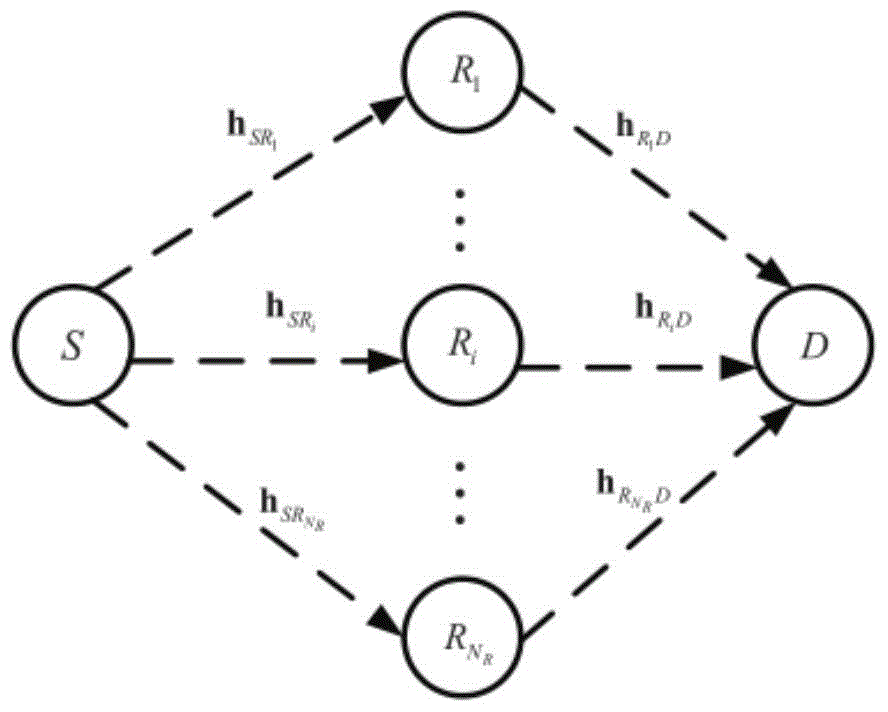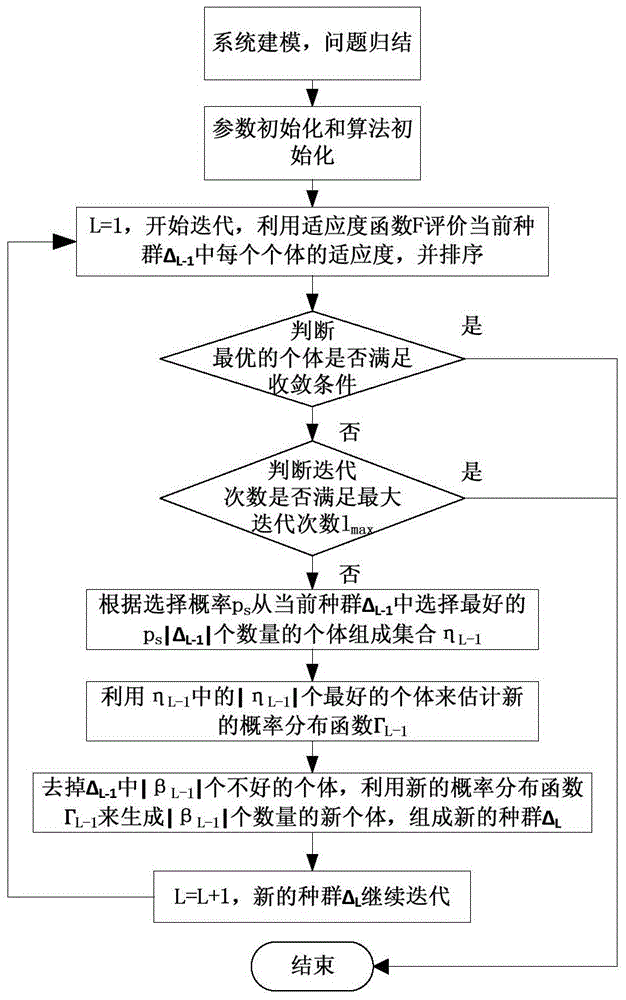Multi-relay selection algorithm based on distribution estimation
A technology of selection algorithm and distribution estimation, applied in the field of wireless communication, can solve problems such as inability to communicate in real time online, high energy consumption and system overhead, and high algorithm complexity
- Summary
- Abstract
- Description
- Claims
- Application Information
AI Technical Summary
Problems solved by technology
Method used
Image
Examples
Embodiment 1
[0067] Step1: System modeling, a typical multi-relay selection scenario is as follows: a source workstation is recorded as S, a destination workstation is recorded as D, N R relay workstations, denoted as R 1 , R 2 ,...,R NR , from N R Among the relay workstations, select K relay workstations to participate in the transmission work, and the remaining N R -K relay stations sleep, where k≤N R , the problem boils down to, the optimization goal is to maximize the equivalent receiving signal-to-noise ratio, which is faster and less complex than the ordinary signal-to-noise ratio function calculation, and is easy to calculate and make decisions in real time.
[0068] The objective function is:
[0069] max SNR e f f = B R i ...
Embodiment 2
[0103] Studies have shown that our system overhead for population sorting accounts for more than 60%, and among them, the calculation of the objective function (ie, fitness function) is the most time-consuming. Therefore, we propose a setp1 in The simplified calculation formula of the objective function:
[0104] max SNR e f f = B R i D E SR ...
Embodiment 3
[0112] For the multi-relay selection algorithm described in Embodiment 1 and Embodiment 2, the algorithm in step 2 is initialized to generate the 0th generation individual set Δ 0 The probability distribution function of can satisfy the (0-1) distribution, and the probability density function is
[0113] p ( θ 1 , θ 2 , ... , θ n ) = Π i = 1 n p i ( θ i ) ,
[0114] ∀ i = 1 , 2 , ... , ...
PUM
 Login to View More
Login to View More Abstract
Description
Claims
Application Information
 Login to View More
Login to View More - R&D
- Intellectual Property
- Life Sciences
- Materials
- Tech Scout
- Unparalleled Data Quality
- Higher Quality Content
- 60% Fewer Hallucinations
Browse by: Latest US Patents, China's latest patents, Technical Efficacy Thesaurus, Application Domain, Technology Topic, Popular Technical Reports.
© 2025 PatSnap. All rights reserved.Legal|Privacy policy|Modern Slavery Act Transparency Statement|Sitemap|About US| Contact US: help@patsnap.com



